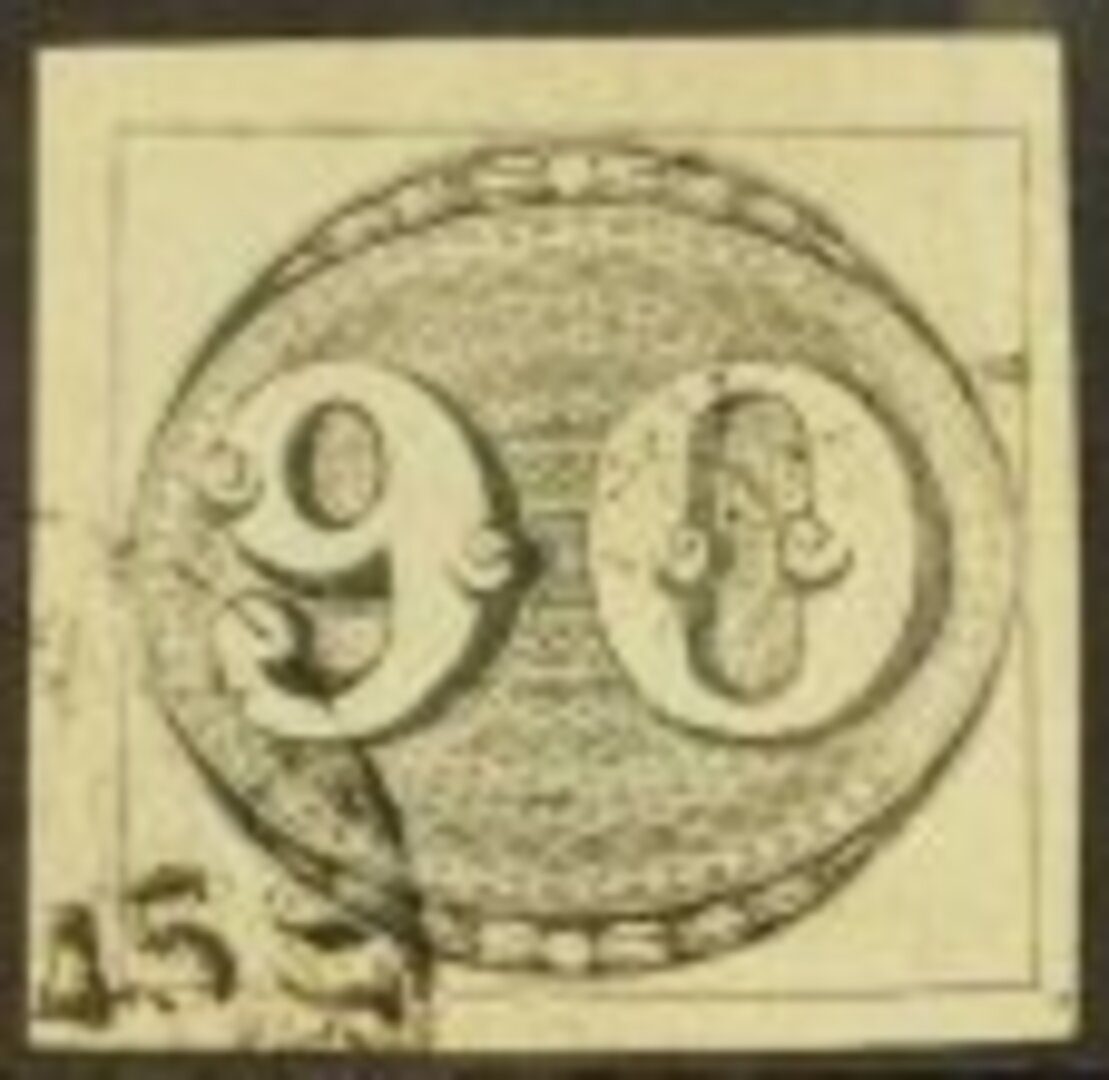Brazil's “Bullseye” stamps (or Ox eyes in their native language) were only the second set of postage stamps in the world. Issued on August 1, 1843, second only to Great Britain's 1840 1d Black and 2d Blue. Although some people would mention the 1842 New York City Dispatch stamps and the Zurich 1843 Numerals, these were only Local issues without full national status.
The designs of the 30r, 60r and 90r stamps of Brazil were taken from a bank note that was used by the Imperial Bank of Brazil prior to 1842. Because this Bank note was engraved and printed by Perkins, Bacon & Company in London, it was assumed for a long time that the stamps also were printed in London. However the mystery was solved when Dr. Jose Kloke, explained in his book, “Bullseyes”, that the Brazilian Customs authorities had seized an engraving press in 1841. This press was confiscated and put in use by the Brazilian Mint with the engraving of the plates, as well as the printing of the stamps, taking place at the Brazilian Mint in Rio de Janeiro.
The first two plates were composed of 54 stamps - 18 of each value in three panes, each containing three horizontal rows of six stamps. Among the greatest rarities of this issue are pairs of the 30r and 60r, or 60r and 90r stamps. Because a greater number of the 30r and 60r denominations were needed, a third plate of fifty-four 30r, a plate of sixty 30r, and two plates of sixty 60r were sent to press. The total printing quantities were 1,148,994 - 30r, 1,502,142 - 60r, and 349,182 - 90r.
These stamps have long been favourites among collectors, not only are their simple engraved lines most appealing but it is quite hard to find them in optimum quality. One reason for their scarcity is that on March 30, 1846, the remainder of the “Bullseyes” (466,711 copies) were burned in the courtyard of the Brazilian Mint, following their replacement by the new Slanting Figures issue. Another reason is that the “Bullseyes” frequently were placed on the flap to seal the envelope with many destroyed or damaged at the time of opening the correspondence.


 General
General
 General
General
 General
General